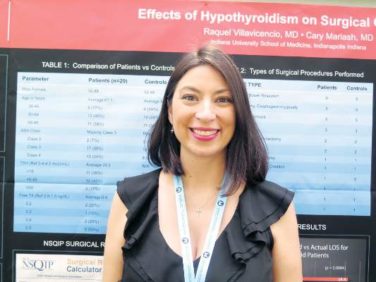EXPERT ANALYSIS FROM THE AAD SUMMER ACADEMY 2016
BOSTON (FRONTLINE MEDICAL NEWS) – For years, much of the information that has circulated about the relationship of diet to acne has been inconsistent. And while recent studies have pointed to two aggravating factors – foods with a high glycemic index and skim milk – whether dietary changes can help control acne remains up in the air, according to Andrea Zaenglein, MD.
At the American Academy of Dermatology summer meeting, Dr. Zaenglein, professor of dermatology and pediatrics, Penn State University, Hershey, reviewed information about diet and acne dating back to the early 1930s, when reports suggested an increased risk of acne in people who were glucose intolerant. Subsequent studies looked at the role of dairy, carbohydrate, chloride, saturated and total fats, sugar, and chocolate in acne. Researchers found no acne in a study of natives of Kitava, an island in Papua New Guinea, whose diet consisted mostly of roots, coconut, fruit, and fish ( Arch Dermatol. 2002;138[12]:1584-90 ). But genetics certainly appears to play a dominant role in acne, Dr. Zaenglein said, referring to a large twin study that found that in 81% of the population with acne, it was due to genetic factors, and in 19% it was due to environmental factors ( J Invest Dermatol. 2002 Dec;119[6]:1317-22 ).
A dietary factor that has been associated with acne is intake of food with a high glycemic index (the ranking on a scale of 0-100 of carbohydrate foods based on how fast they raise blood glucose levels and therefore, insulin levels). Dietary glycemic load is based on the glycemic index of a food and the amount of carbohydrates in a serving. Examples of high glycemic index foods are sugars, refined grains, starches, white rice, and corn. Low glycemic index foods include fruits, vegetables, and milk.“We know that a high glycemic index diet leads to hyperinsulinemia that can lead to increased sebum production,” Dr. Zaenglein said. “Insulin, and particularly IGF-1 [ insulinlike growth factor 1 ], also have been shown to stimulate sebum production in vitro.”She referred to a controlled intervention study that randomized 43 male patients with acne aged 15-25 years to a low glycemic load diet, or to a carbohydrate dense control diet without regard to glycemic index for 12 weeks ( Am J Clin Nutr. 2007 Jul;86[1]:107-15 ). At the end of the study, those on the intervention diet had about a twofold greater reduction in the mean number of acne lesions, compared with controls (23.5 fewer lesions vs. 12.0; P = .03).Most acne studies that have evaluated milk consumption and differentiated between whole milk and skim milk have found more acne associated with skim milk. “The milk fat contains beneficial monounsaturated fatty acids. It also contains unadulterated vitamins A and D, and then the fatty acids are known to have anti-inflammatory effects,” Dr. Zaenglein said in an interview, proposing an explanation for this finding. She added that studies showing benefits of milk fat on stroke and cardiovascular risk have implicated the fat for lowering levels of insulin growth factors, which could also be active in sebum production.However, a recently published Norwegian study of adolescents with moderate to severe acne found the contrary: Males who self-reported high intakes of full-fat dairy products had almost a fivefold increased risk for acne. There was no significant association of acne with skim milk intake or with moderate intakes of any variety of fats from dairy products ( J Eur Acad Dermatol Venereol. 2016 Jul 16. doi: 10.1111/jdv.13835 ).Coming from Hershey, Pa., Dr. Zaenglein said she should at least mention the data on chocolate and acne. While patients may still believe that chocolate causes acne, “we really don’t have good studies for chocolate and acne,” she said.So what dietary advice can physicians give to their patients with acne?
For now, Dr. Zaenglein’s advice is to recommend a low glycemic index diet mainly of fruits and vegetables and low in saturated fats and sugars, which may ameliorate acne by decreasing weight and insulin resistance – especially in patients who already have abnormal metabolic parameters. Patients should also be advised to limit processed foods, meat, and dairy, she added.
As far as dairy and acne, it is too early to say what the impact of intervention would be “because we don’t have any great interventional studies that have been done,” she said. Moreover, it is unclear how early dietary interventions would need to be started to reduce an individual’s risk of acne, she added.“It could go all the way back to things that happened when you were born that influence your outcome,” Dr. Zaenglein said. For example, babies born prematurely are at greater risk for endocrine stressors, which lead to premature adrenarche, increasing their risk for acne, she noted.
“We really need new, better intervention studies to be able to give advice to our patients,” she said. However, conducting such studies is challenging because it is difficult for people to eliminate dairy or other types of food from their diets for a prolonged period. To date, the majority of dietary studies have been observational and have relied on subjects’ recall of what they consumed, so these studies have their own inherent problems, she added.Dr. Zaenglein’s disclosures include serving as an adviser to Anacor Pharmaceuticals and Valeant Pharmaceuticals International, and serving as an investigator and receiving grants/research funding from Anacor, Astellas Pharma US, Ranbaxy Laboratories Limited, and Stiefel, a GSK company.






